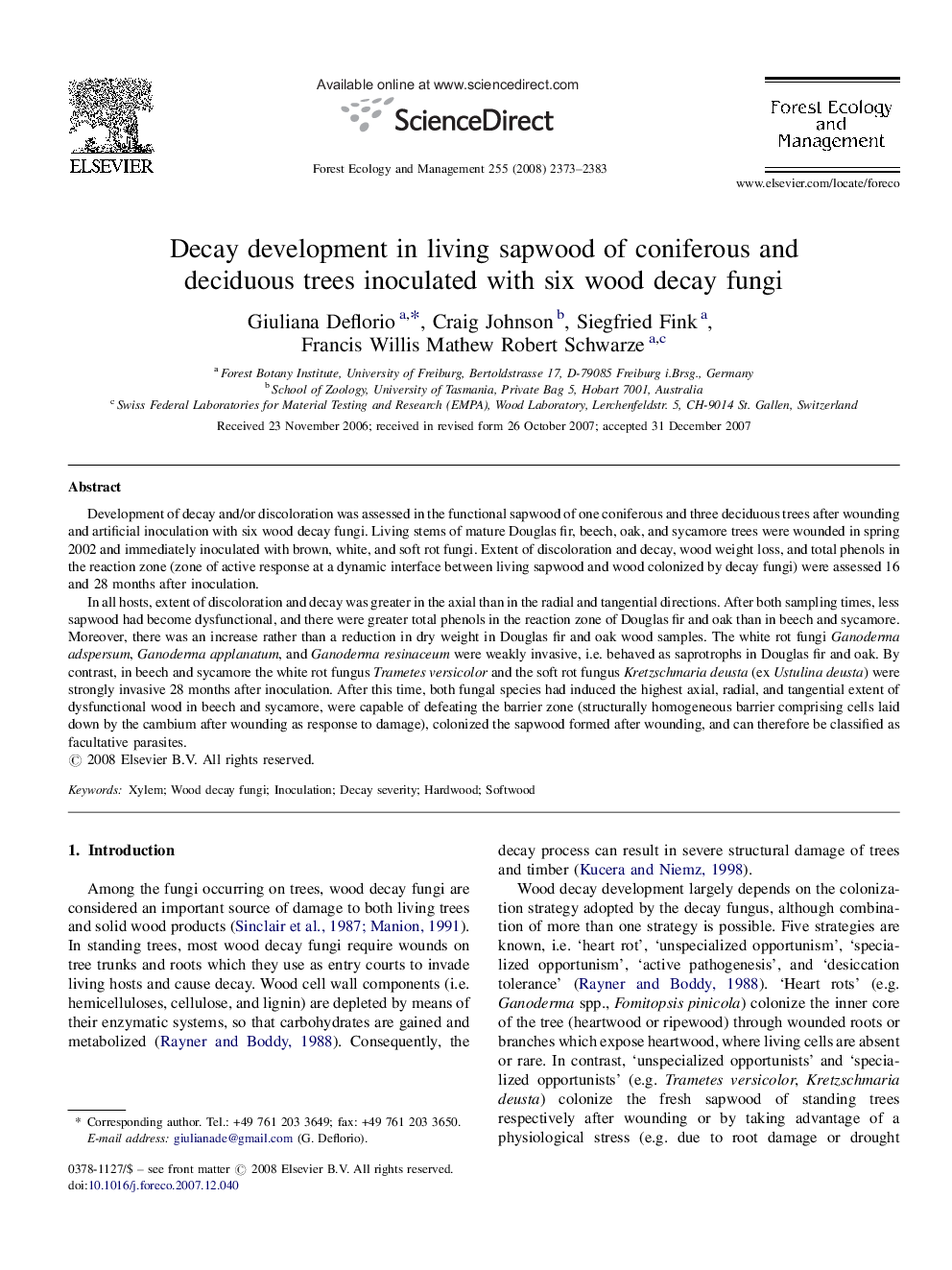| کد مقاله | کد نشریه | سال انتشار | مقاله انگلیسی | نسخه تمام متن |
|---|---|---|---|---|
| 89374 | 159340 | 2008 | 11 صفحه PDF | دانلود رایگان |

Development of decay and/or discoloration was assessed in the functional sapwood of one coniferous and three deciduous trees after wounding and artificial inoculation with six wood decay fungi. Living stems of mature Douglas fir, beech, oak, and sycamore trees were wounded in spring 2002 and immediately inoculated with brown, white, and soft rot fungi. Extent of discoloration and decay, wood weight loss, and total phenols in the reaction zone (zone of active response at a dynamic interface between living sapwood and wood colonized by decay fungi) were assessed 16 and 28 months after inoculation.In all hosts, extent of discoloration and decay was greater in the axial than in the radial and tangential directions. After both sampling times, less sapwood had become dysfunctional, and there were greater total phenols in the reaction zone of Douglas fir and oak than in beech and sycamore. Moreover, there was an increase rather than a reduction in dry weight in Douglas fir and oak wood samples. The white rot fungi Ganoderma adspersum, Ganoderma applanatum, and Ganoderma resinaceum were weakly invasive, i.e. behaved as saprotrophs in Douglas fir and oak. By contrast, in beech and sycamore the white rot fungus Trametes versicolor and the soft rot fungus Kretzschmaria deusta (ex Ustulina deusta) were strongly invasive 28 months after inoculation. After this time, both fungal species had induced the highest axial, radial, and tangential extent of dysfunctional wood in beech and sycamore, were capable of defeating the barrier zone (structurally homogeneous barrier comprising cells laid down by the cambium after wounding as response to damage), colonized the sapwood formed after wounding, and can therefore be classified as facultative parasites.
Journal: Forest Ecology and Management - Volume 255, Issue 7, 20 April 2008, Pages 2373–2383